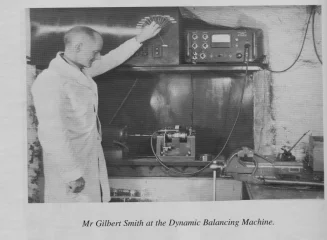Comparing dynamic balancing with static balancing is tough for most of us laypeople.
The way to do it would be to rebuild an engine and have the crank statically balanced to the required / correct balance factor. Then ride it somewhat to see what it's like. Then strip it again and have the crank dynamically balanced without changing the balance factor and evaluate the difference.
I'm guessing that not many of us have done that, and I certainly haven't.
So, when we rebuild an engine and have the crank rebalanced to a new factor and dynamically balanced at the same time, we don't know how much of the benefit is due to good static balancing to the new balance factor or to the dynamic balancing.
I have had my cranks dynamically balanced for years, perhaps the crude lumpy castings of Brit cranks respond well to it? But Steve Maney is adamant his don't need it, perhaps it's due to his being precision machined all over?
Of course, what I should do is as discribed above, fit the crank in its statically balanced condition, run it, strip it again, dynamically balance the crank without changing the balance factor, rebuild it again and evaluate the difference.
But, unfortunately, that ain't the plan !

